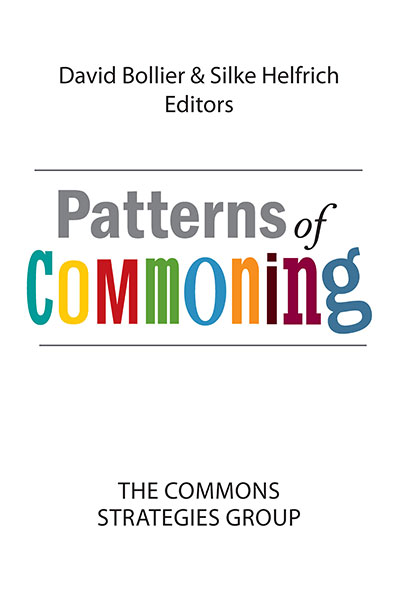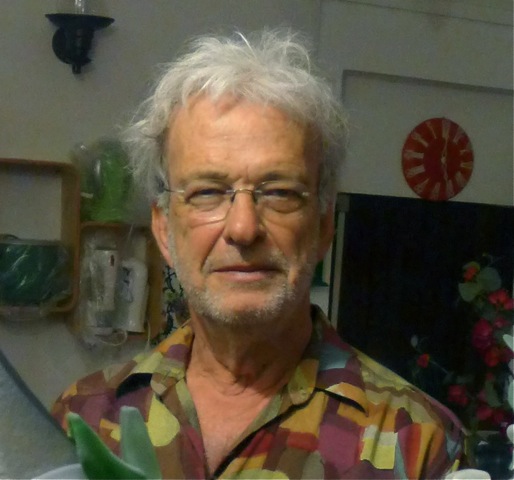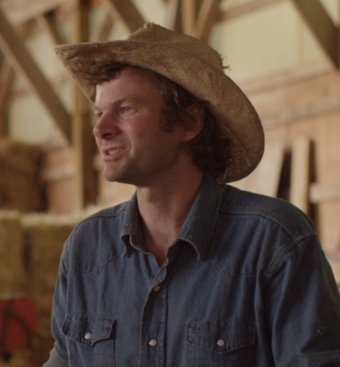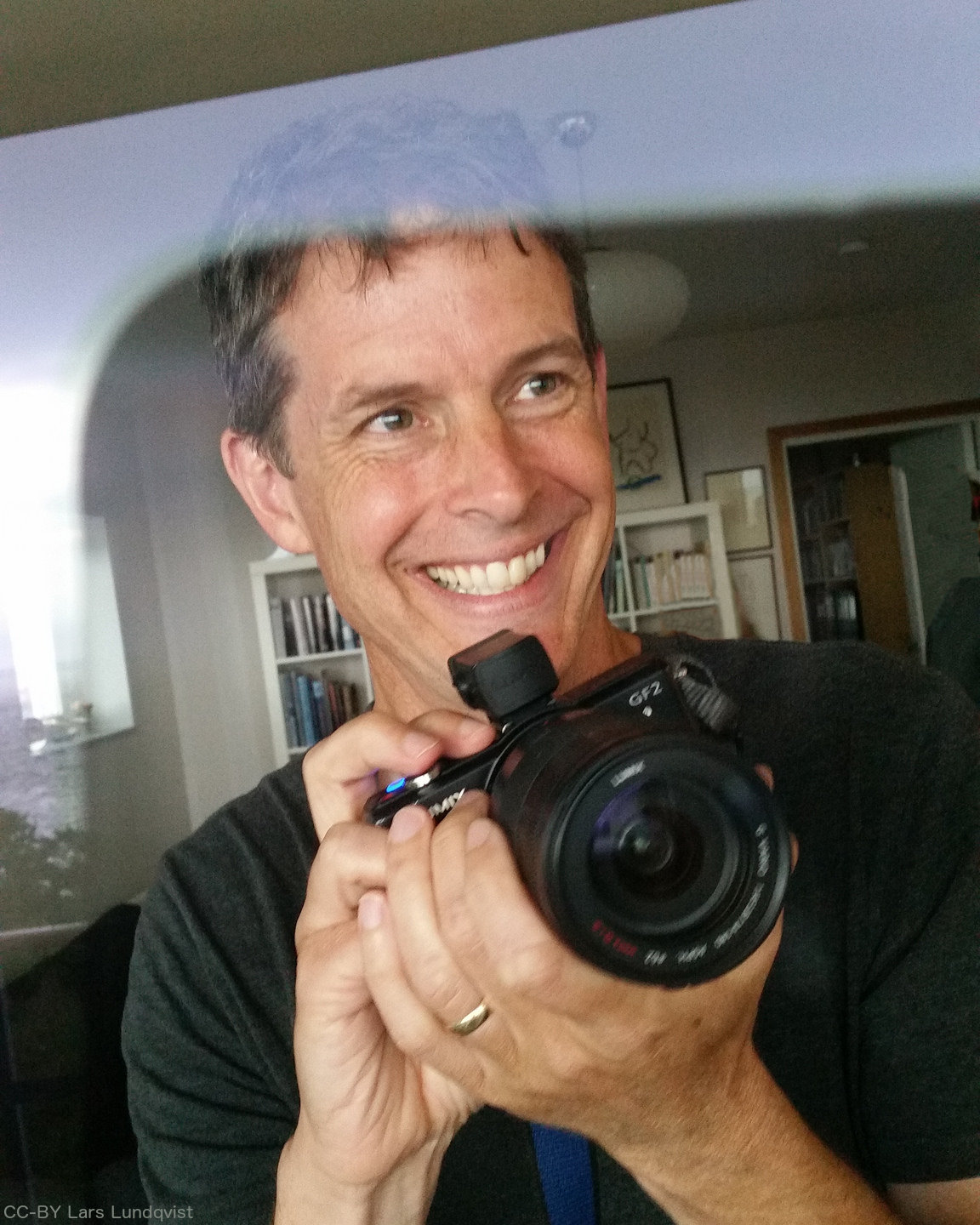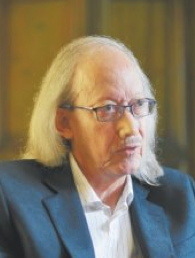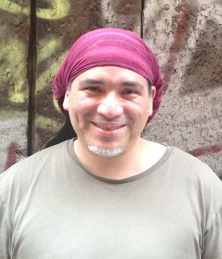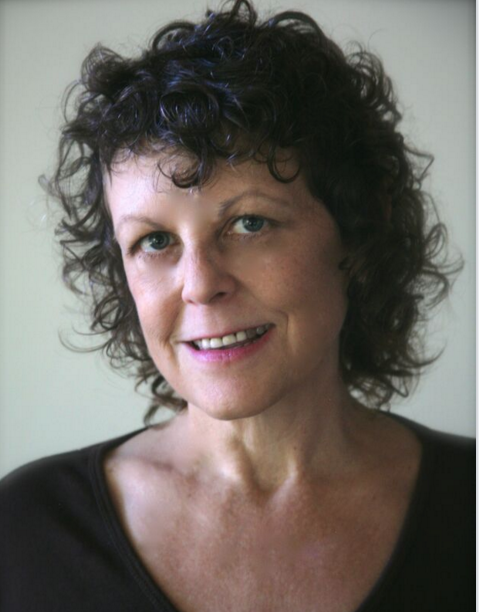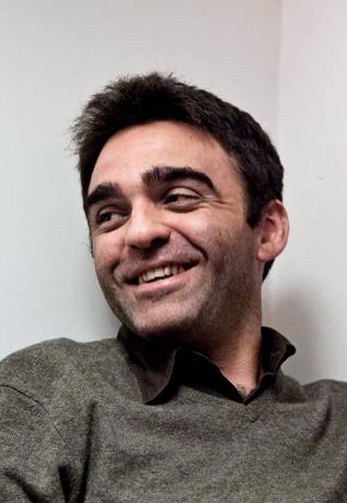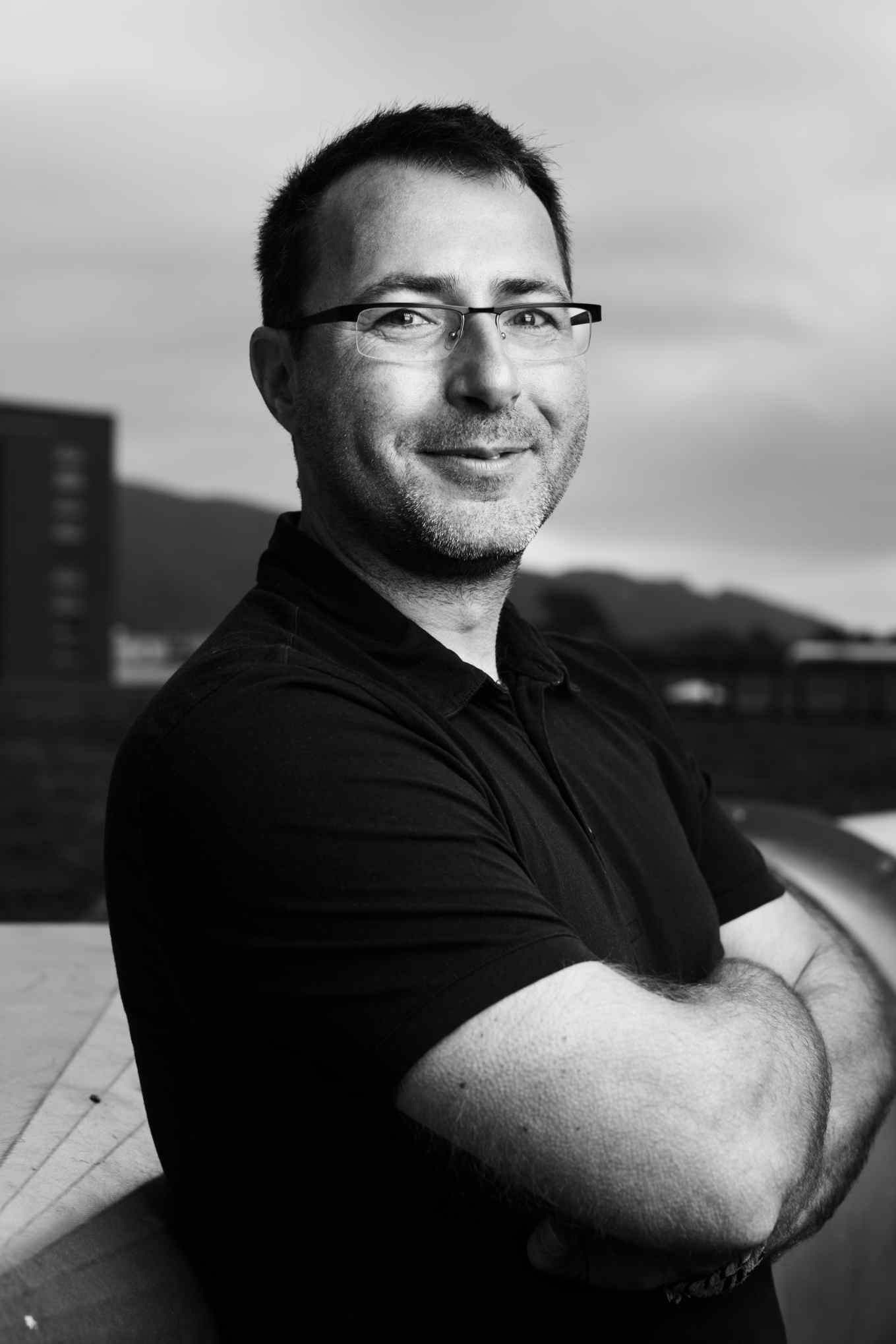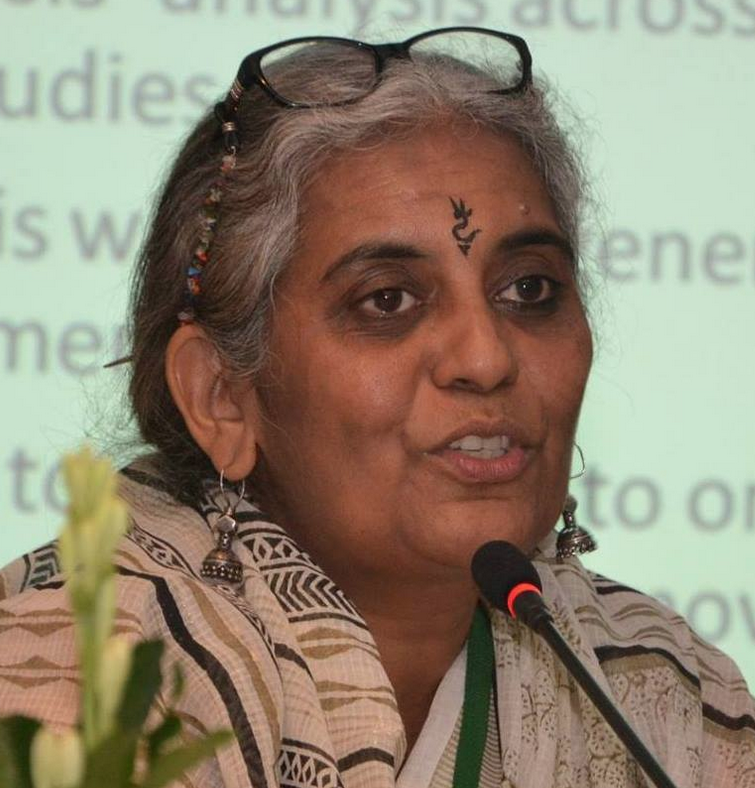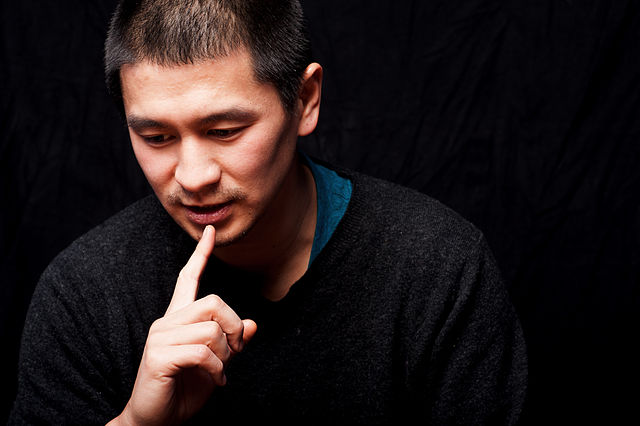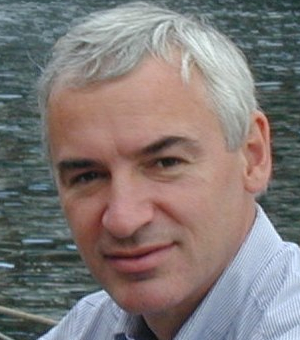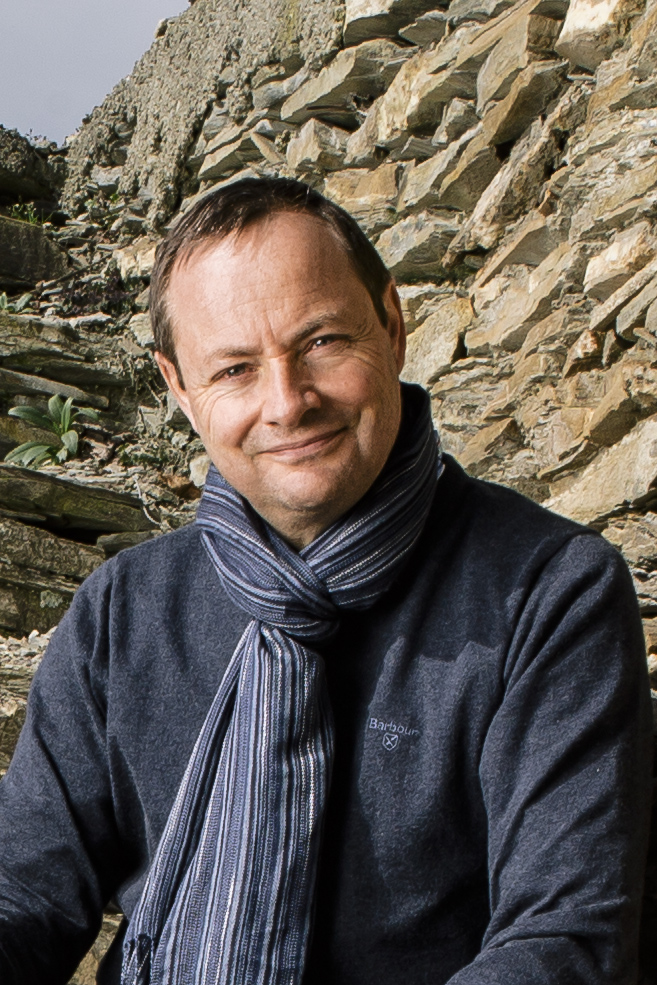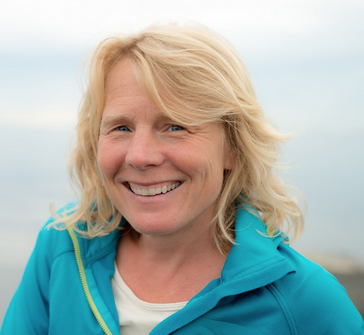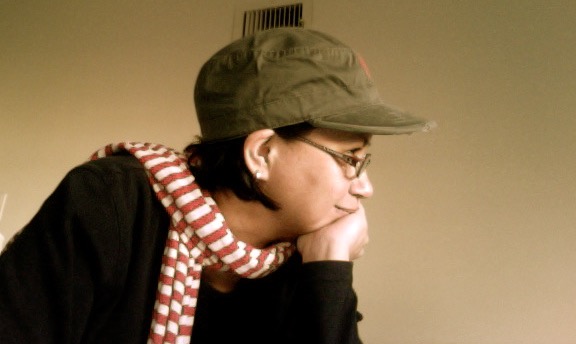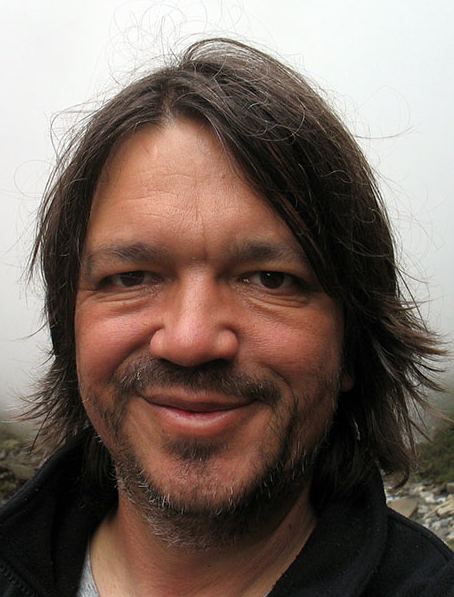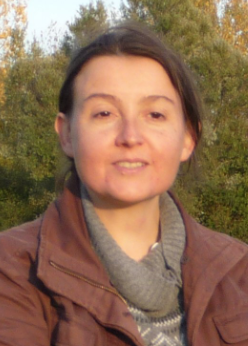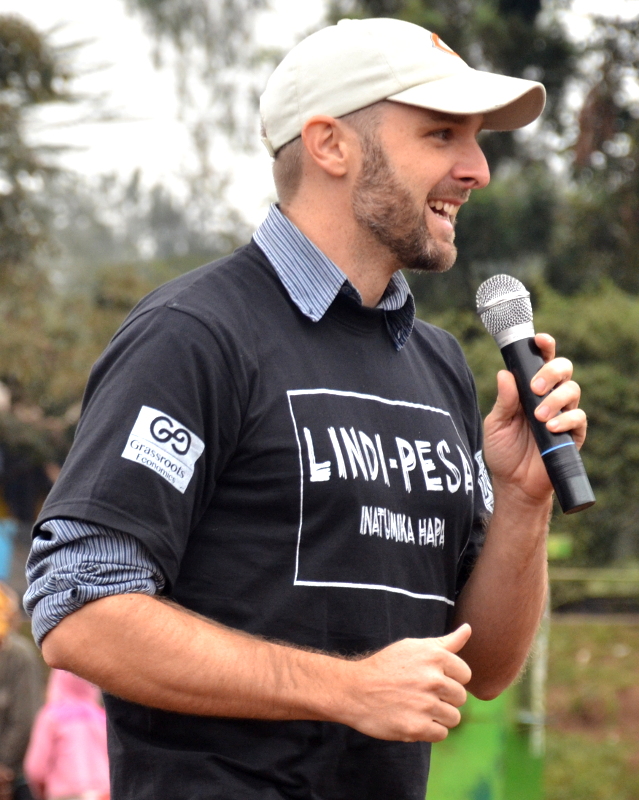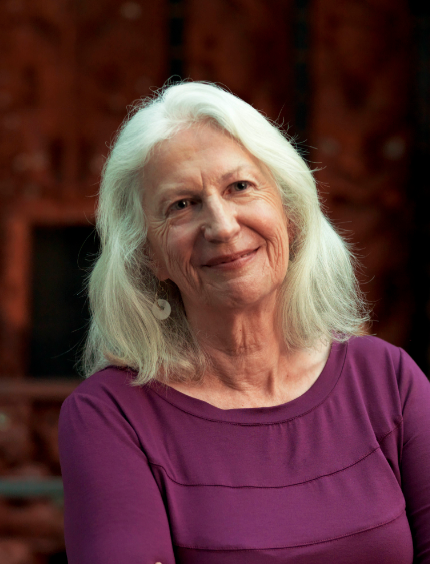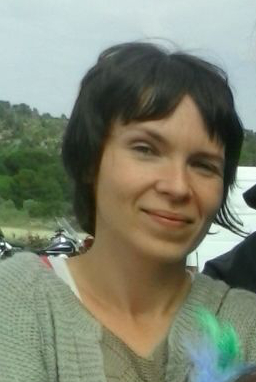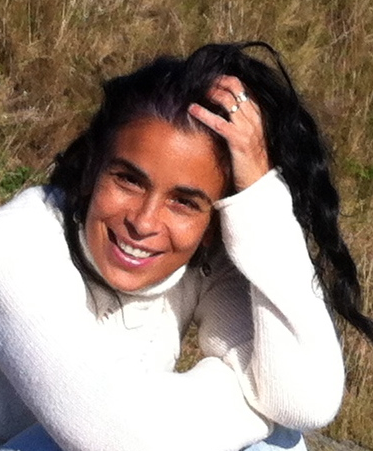Alain Ambrosi (Canada) is a designer and producer of intercultural projects, independent researcher, author, videographer and producer of the Remix The Commons Project.
Patterns of
COMMONING
The Fountain of Fish: Ontological Collisions at Sea
By Anne Salmond
“If something goes wrong, its not only our beaches that get ruined. It’s everyone’s.”
[Tweedie Waititi, Te Whanau-a-Apanui, Sunday Star Times]
In April 2011, a small flotilla of protest vessels headed out to sea from the Eastern Bay of Plenty in New Zealand. Among them was a fishing boat, the San Pietro, owned by the local iwi (kin group), Te Whanau-a-Apanui, and skippered by Elvis Teddy, an iwi member. Rikirangi Gage, a senior tribal leader, was also on board.
At that time, a large ship, the Orient Explorer, contracted by the Brazilian oil company Petrobas, was conducting a seismic survey of the Raukumara Basin, about 300 kilometers north of East Cape. In 2010, Petrobas had been granted a permit by the New Zealand government to prospect for oil in these waters, which crossed Te Whanau-a-Apanui’s ancestral fishing grounds.
When they learned of this permit from press reports, the iwi leaders were incensed. Under the Treaty of Waitangi, signed in 1840, Queen Victoria had guaranteed their ancestors the “full, exclusive, undisturbed possession of their Lands and Estates Forests Fisheries and other properties… so long as it is their wish and desire to retain the same in their possession.” (Waitangi Tribunal)
Since 1975 the Waitangi Tribunal, established to inquire into breaches of the Treaty, had held hearings around the country and investigated many complaints by Maori kin groups, including those relating to fishing and the ocean. The Tribunal issued reports and made recommendations, and over this period, successive governments had offered apologies and settlements in cash and kind to many iwi around the country.
When Te Whanau-a-Apanui leaders met with the Prime Minister to state their opposition to drilling for oil in their ancestral waters, he expressed sympathy, but refused to revoke the permit. Determined that their point of view should be heard, the tribe put out a call for assistance, and the environmental group Greenpeace responded by sending a flotilla of protest vessels to the Bay of Plenty.
As anger about the oil prospecting increased, placards and signs sprang up on windows and fences along the road between Opotiki and Gisborne. Bonfires were lit in protest, and large-scale haka (war-dances) performed on the beaches.
In April 2011 Greenpeace protestors swam into the path of the Orient Explorer, watched by members of the Air Force, Navy and police. The police issued notices under the Maritime Act, ordering the protest boats and their crews to stay 200 meters from the ship, or to face a fine of NZ$10,000 or up to a year in jail (Hill 2011).
In a press interview, Tweedie Waititi from Te Whanau-a-Apanui expressed surprise at the depth of feeling among her people: “We are the most placid iwi on earth. And I tell you what, the government has awakened some sort of taniwha [guardian creature]. It’s quite a surprise to see my people react the way they are reacting. We’re all virgins at doing this. We never fight.” (Waititi 2011).
Like other New Zealanders, tribal members had heard a great deal about the Deep Horizon blowout in the Gulf of Mexico the previous year, and the damage done to the ocean, sea life, coasts and estuaries, and the livelihoods of local people. They were fearful that a similar catastrophe might happen in their ancestral waters.
Tweedie also expressed concern for the moki, a sacred fish that migrates every year from Hawaiki, the ancestral homeland, to Te Whanau-a-Apanui waters. “That’s the moki’s home”, she said, “Right where they want to drill. Every June, there is a star that shines in the sky and her name is Autahi, and that’s our indication that the moki has come home.”
The story of the moki is told in paintings in the dining hall and carved meeting-house at Kauaetangohia marae, at Whangaparaoa. I had also heard about this sacred fish many years earlier when I worked with Eruera Stirling, a leading elder of the iwi, on a book about his ancestors and his life. He told me about a time in his youth when a senior elder, Manihera Waititi, invited him and his elder brother to catch the “first fish” to open the moki season.
On that occasion, the two boys went to the Whangaparaoa River before dawn and boarded Manihera’s boat. With a land breeze behind them, the elder took them to the moki fishing ground about one hundred yards offshore from Ratanui, a beach where ancestral voyaging canoes had come ashore.
After catching several moki, they headed out to a deep water fishing ground, where they caught several more of the sacred fish. Back on shore, the old man gave them the moki to take home to their mother, Mihi Kotukutuku. As the tribe’s senior leader, it was customary for her to be presented with the first fish of the season.
According to Eruera, the waters offshore from Raukokore, his home village, are known as Te Kopua a Hine Mahuru, the deep waters of Hine Mahuru, named after the ancestress of his people. Its fishing grounds and shellfish beds are linked with the carved meeting-house on shore, also named after this high born woman, whose mana(ancestral power) extended over the land and sea.
A rock named Whangaipaka stands in these waters, guarded by a kai-tiaki or guardian, a large sting-ray. If a stranger went there without permission, a great wave carrying the stingray would sweep over the rock, drowning the intruder. Eruera told me that in his time, shellfish beds and fishing grounds were jealously guarded:
Each district had its own mussel beds, and they were reserved for the people of that place. If the people saw a stranger picking their mussels, look out! He’d be a dead man if he came ashore. Fishing was very tapu [imbued with ancestral presence], and each family had its own fishing grounds, no one else could fish there or there would be a big fight.
The old people were very particular about the sea, and nobody was allowed to eat or smoke out on the boats. If a man took food with him when he went fishing, he’d sit there all day with his hook and line empty and the fish would stay away.
Sometimes if the fishing was very bad the people would start asking questions, and if they found out the guilty man, he’d get into big trouble for breaking the sacred law of tapu. The people would just about knock him to pieces, and he wouldn’t be allowed to go out to sea again for quite a while. If a thing like that happened at home, you were well marked by the people (Stirling 1980:106).
Given the intensity of this bond between people, their land and ancestral waters, it is not surprising that Te Whanau-a-Apanui were outraged when, without prior warning, the government issued a permit for an oil company to explore their ancestral waters. As Tweedie Waititi remarked, it was as though a taniwha, a powerful ancestral being, had woken up and was thrashing around in the ocean.
When Rikirangi Gage, an acknowledged senior leader of the iwi, joined the protest flotilla, the government ignored this gesture. Several days later, Te Whanau-a-Apanui’s fishing boat San Pietro motored across the bow of the Orient Explorer, trailing tuna fishing lines and a string of buoys tied together with rope. When the captain of the survey ship told them to stay away, Gage replied, “We won’t be moving. We’ll be doing some fishing.”
Soon afterwards police officers boarded the fishing boat and arrested the skipper, Elvis Teddy, charging him with an offense under the Marine Transport Act. Back on shore, Teddy defended his actions, saying that he was simply exercising his right under the Treaty of Waitangi to fish his ancestral waters. If his boat had come close to theOrient Explorer, it was the fault of the drilling ship’s commander for not avoiding a fishing vessel.
Teddy was prosecuted, and during his trial in the Auckland District Court, his lawyers argued that since the confrontation had happened outside New Zealand’s twelve mile territorial zone, the Maritime Transport Act did not apply. The judge agreed, and the charges were dismissed.
When the police appealed the judgment to the High Court, however, the Court ruled that as a New Zealand vessel, the San Pietro came under New Zealand jurisdiction, even on the high seas (Woolford 2013). Although there was no specific provision in the Maritime Transport Act to this effect, the Act must apply beyond the twelve mile limit, or the New Zealand government would be unable to uphold its international obligations under the 1982 UN Convention on the Law of the Sea. (Webster and Monteiro 2013).
After this verdict, Teddy’s lawyer issued a statement saying that by granting a drilling permit in their ancestral waters without consulting Te Whanau-a-Apanui, and by sending the Navy, Air Force and police to stop Teddy and Gage from fishing in ancestral waters, the New Zealand Government had breached not only the Treaty of Waitangi but the International Convention of Indigenous Rights, which New Zealand has also signed (Te Whanau-a-Apanui 2012).
Soon afterwards, the New Zealand government took further steps to tighten its control over New Zealand vessels on the high seas, passing a hotly debated act that prohibits protest at sea in the vicinity of oil exploration vessels (Devathasan 2013).
This clash between Te Whanau-a-Apanui on the one hand, and Petrobas and the Crown on the other, was not just a physical confrontation. It was an ontological collision – a clash between different “worlds” or ways of being. Different claims to the sea, different ideas about collective rights, and different kinds of freedoms and constraints were being negotiated.
At the same time, this is not a simple confrontation between different “cultures” or “ethnicities.” It is a complex story, with different resonances for different people.
The Sea as a Theater of Protest
For many in New Zealand, the standoff between the San Pietro and a large oil drilling ship recalled an episode in 1973 when the New Zealand government tried to stop French nuclear testing in the Pacific. Two naval frigates, one with a cabinet minister on board, were sent to Moruroa atoll, a testing site in the Society Islands. When a Greenpeace yacht was boarded off Moruroa, its skipper was assaulted by French marines.
In 1984 when the New Zealand government declared the nation nuclear-free and refused to allow visits by US nuclear vessels, the country was ejected from the ANZUS alliance. A year later, French agents sank the Greenpeace vessel Rainbow Warrior, which was about to lead another protest flotilla to Moruroa, in Auckland harbor (Thakur 1986).
In New Zealand, as one can see, freedom to protest at sea is deeply entangled with national identity, and a concern for environmental issues. For many New Zealanders, by pitting its small boat against the oil drilling ship, Te Whanau-a-Apanui was following in that tradition, fighting to protect the ocean.
For many members of Te Whanau-a-Apanui, on the other hand, this was more a question of protecting the mana of their kin group. The San Pietro and its crew were asserting the right of their iwi to protect their ancestral fisheries against unwanted intrusion, based on the guarantee of “full, exclusive and undisturbed possession” of their fishing grounds under Article 2 of the Treaty of Waitangi.
At the same time, for the Government and many other New Zealanders, it was a matter of upholding the sovereignty of the Crown, and the government’s right to manage the 200-mile Exclusive Economic Zone; to issue exploration permits to oil companies; and to protect prospectors from interference by protest vessels, including those owned by iwi.
Nevertheless, this was not an ethnic confrontation. Many of the protestors were not Maori, and as Tweedie Waititi remarked, “If something goes wrong, it’s not only our beaches that get ruined. It’s everyone’s. I’m pretty sure that not only Maori have a connection to the sea.” Also, some iwi were flirting with the idea of supporting oil exploration: “Like our lawyer said,” she added, “our mana’s not for sale and no amount of money could pay us off. Maybe some iwi you could dangle a carrot. But this one’s not biting.”
In order to explore these ontological collisions, and what they tell us about different relationships between people and the ocean in New Zealand, and different ideas about the commons, I’d like to explore some of the deep, taken-for-granted presuppositions that underpin the positions adopted by different protagonists, along with previous alliances and confrontations.
The Fountain of Fish: The Ocean in Te Ao Maori
As the anthropologist Marshall Sahlins once remarked, “The [Mori] universe is a gigantic kin, a genealogy… a veritable ontology” (Sahlins 1985:195). Te Ao Maori [the Maori world] is ordered by whakapapa – vast, intricate networks of relationships in which all forms of life are mutually defined and linked, and animated by hau [breath, wind, life force].
In 1907, Elsdon Best, a New Zealand ethnologist who had spent a lifetime studying Maori customs, wrote to an elder called Tamati Ranapiri, asking him to explain the idea of the hau. Ranapiri replied:
As for the hau, it isn’t the wind that blows, not at all. Let me explain it to you carefully. Now, you have a treasured item (taonga) that you give to me, without the two of us putting a price on it, and I give it to someone else. Perhaps after a long while, this person remembers that he has this taonga, and that he should give me a return gift, and he does so.
This is the hau of the taonga that was previously given to me. I must pass on that treasure to you. It would not be right for me to keep it for myself. Whether it is a very good taonga or a bad one, I must give to you, because that treasure is the hau of your taonga, and if I hold on to it for myself, I will die. This is the hau. That’s enough (Ranapiri 1907).
The hau is at the heart of life itself. As Ranapiri explains, if a person fails to uphold their obligations in such exchanges, their own life force is threatened. As gifts or insults pass back and forth, impelled by the power of the hau, patterns of relations are forged and transmuted, for better or for worse.
When Elsdon Best wrote about Ranapiri’s account of the hau, it captured the imagination of a French sociologist, Marcel Mauss. In 1925, Mauss published The Gift, a classic work exploring gift exchange in a range of societies, including his own. Quoting Ranapiri, he contrasted the Maori concept of the hau and chiefly generosity with the utilitarian assumption in contemporary capitalism that all transactions are driven by self-interest, arguing that this gives an impoverished, inaccurate view of how relations among people shape social life.
For Mauss, the hau, or the “spirit of the thing given” impels a gift in return, creating solidarity. His discussion of the concept is perceptive, but in fact, it only scratches the surface. In Maori philosophy, hau drives the whole world, not just human communities. It goes far beyond the exchange of gifts among people.
According to the tohunga [experts] in the ancestral whare wananga [schools of learning], hau emerged at the beginnings of the cosmos. In a chant recorded by Te Kohuora, for example, the world begins with a burst of energy that generates thought, memory and desire (Te Kohuora 1854).
Next comes the Po, long aeons of darkness. Out of the Po comes the Kore, unbound, unpossessed Nothing, the seedbed of the cosmos, described by one of Best’s contemporaries as “the Void or negation, yet containing the potentiality of all things afterwards to come” (Tregear 1891:168).
In the Void, hau ora and hau tupu, the winds of life and growth begin to stir, generating new phenomena. The sky emerges, and then the moon and stars, light, the earth and sky and the ocean.
When the forest ancestor Tane creates the world of light and life by forcing earth and sky apart, his brother Tawhiri, the wind ancestor, attacks him and his children, the trees, smashing their branches, and the ancestors of root crops, forcing their offspring to hide in the ground. In this cosmic battle, only Tu, the ancestor of people, stands tall against the Space Twister. For his bravery, he earns for his descendants the right to harvest the offspring of his brothers – birds, root crops, forest foods and trees, fish, crayfish and shellfish.
Utu, the principle of reciprocity, drives the interactions between individuals and groups and all other life forms in the Maori world, working towards (an always fragile) equilibrium. In the process, hau is exchanged among and between people and other life forms, binding their fates together.
Here, individuals are defined by their relationships, and subject and object are not radically divided. From this we can see that any idea of the commons that presupposes this Cartesian division is rooted in a particular modernist cosmo-logic, one that cannot claim universal validity or application.
In Maori life, the mingling of self and other is reflected in many ways. When greeting one another, for instance, Maori people press noses and breathe, mingling their hau [wind of life] together. People speak of themselves as ahau [myself], and when rangatira or chiefs speak of an ancestor in the first person, it is because they are the kanohiora [living face] of that ancestor.
A refusal to enter into reciprocal exchanges, on the other hand, is known as hau whitia, or hau turned aside. Hauhauaitu [or “harm to the hau”] is manifested as illness or ill fortune, a breakdown in the balance of reciprocal exchanges. The life force has been affected, showing signs of collapse and failure.
This also applies to people’s relations with other life forms. Unless the exchanges between people and the sea are balanced, for instance, the hau of both the ocean and the people alike will suffer.
Stories about the sea illustrate this point. According to Timi Waata Rimini, an elder from Te Whanau-a-Apanui, many generations ago the son of the ancestor Pou drowned in the Motu River. Setting off in search of his son, Pou arrived at the home of the sea ancestor Tangaroa, a “fountain of fish” teeming with different species, where he asked the sea ancestor whether he had taken his son. When Tangaroa denied it, knowing that he was lying, Pou asked him to attend his son’s tangi [funeral].
Returning to the Bay of Plenty, Pou told his people to make a great net. That summer, a huge shoal of kahawai (Arripis trutta) approached the coast, escorting the sea ancestor to the funeral. On a signal, Pou ordered his people to cast the great net. Thousands of Tangaroa’s children were caught and fed to the crowds that had gathered to mourn Pou’s son (Rimini 1901).
As Rimini explained, when the kahawai arrive at the mouth the Motu River every year, a chiefly youngster was sent out to catch three kahawai, which were offered to Pou and the high chief of the region. By acknowledging the mana of the sea ancestor, these “first fish” rituals opened the fishing season, protecting the fertility and abundance of the ocean.
Other local customs related to the kehe or granite trout, a sacred fish that frequented rocky channels in the reefs, grazing on kohuwai, a particular type of seaweed. There were a number of methods used to catch this fish, including shaping channels in the reef with stones, waiting until the kohuwai grew back again, and then using a hoop net to scoop up the kehe as they grazed on the seaweed, or using a pole to drive them into the net.
When the chief’s wife at Omaio became pregnant, he said, the rahui or sacred prohibition on a famous kehe fishing ground called Te Wharau was lifted, and as people gathered on the beach, men with hoop nets were sent to stand on particular named rocks. When the tohunga or expert called out Rukuhia, people dived into the channels, swimming underwater and driving the kehe into the hoop nets, in a joyous pandemonium. Afterwards, the fish were cooked and presented to the chieftainness as a delicacy (Te Rangihiroa 1926).
In this onto-logic, the sea itself was alive and breathing. When Te Parata, a powerful being in the heart of the ocean, breathed out, the tide began to flow, and children were born. When he breathed in, a great vortex formed, swallowing canoes at sea. At death, a great rangatira might be farewelled with the chant, “The eddy squall is gone, the storm is passed away, the Parata is gone, the big fish has left its dwelling place.” (Colenso 1887:422).
Here, ideas about collective rights acknowledge the vitality of other life forms – fish, rivers, mountains and land, for example. Rights in particular localities are distributed between people and other phenomena, nested and linked in exchange relationships at various scales. In relation to the sea, these ideas allow the control of use rights, along lines of kinship and descent or gift exchange.
In contemporary times, these ways of thinking are receiving legal recognition in New Zealand. In 2014, for instance, in a Waitangi settlement with the Whanganui iwi, the Crown has recognised their iconic river as a legal being; while in a Waitangi settlement with Tuhoe, an inland people, their ancestral land Te Urewera has been recognized in the same way, with co-management regimes with the Crown and regional authorities being established.
In many ways, these legal innovations echo contemporary biological understandings in which people and other phenomena (such as the ocean) are engaged in complex interactive systems, mutually implicated at every scale, while the idea that people might be linked by kinship with marine life forms is shared with evolutionary biology, for instance.
The virtue of these arrangements is that the well-being of a lake, a river or the ocean can be given legal priority in the allocation of resource rights and management regimes, alongside the interests of human beings.
The Ocean in the Enlightenment
There are both divergences and resonances between Western and Maori ideas about the sea. When Captain Cook’s ship Endeavour arrived off the east coast of the North Island in October 1769 and brought the first Europeans ashore, for instance, the ship was a travelling sideshow of the Enlightenment in Europe, laden with a cargo of colliding cosmologies.
This was a scientific naval expedition, sponsored by the Royal Society of London to observe the Transit of Venus in Tahiti, and by the Admiralty to find Terra Australis, the Unknown Southern Continent. It is a mistake to think of the meetings that followed as binary clashes between two “cultures,” however. As at present, Maori and European ways of thinking alike were diverse.
One strand of Enlightenment thought, for instance, can be traced back at least as far back as the seventeenth century, when the philosopher Descartes had a new vision of reality, at once powerful and intoxicating. In his dream, the Cogito – the “thinking self” or Subject – became the eye of the world, which in turn became an Object for inspection.
The Cartesian division between mind (res cogitans) and matter (res extensa), Subject and Object is historically and culturally specific. During the Enlightenment in Europe, as culture was separated from nature, the natural sciences and the humanities and social sciences began to diverge (Descola 2013).
As entities were detached from each other, they were objectified and classified, and the different disciplines emerged. This “Order of Things,” as Michel Foucault called it, was at the heart of Enlightenment science (Foucault, 1970). It also shaped the law of the sea, and how forms of control were distributed over the ocean.
In this style of thinking, the ancient motif of the grid was used to divide and sort different dimensions and entities into bounded units, bringing them under control for practical purposes. Often, the grid was hierarchical – the old idea of the Great Chain of Being, for example, with God at the apex followed by angels, divine Kings, the aristocracy and successive ranks of people, from “civilized” to “savage,” followed by animals, plants and minerals in descending order (Lovejoy 1936, Hodgen 1971).
As the cogito or thinking self became the guarantor of being, the all-seeing “Eye of God” was replaced by the “Mind’s Eye,” and human beings were put in charge of the cosmos. Often, this was understood as a machine, made up of distinct, divisible working parts that performed particular functions.
In the mid-eighteenth century in Europe, the Order of Things went viral. Many aspects of life were transformed – administration (with censuses, surveys, and bureaucratic systems), industry (with manufacturing based on mechanization and standardization, the replication of parts and processes), and science (with the use of instruments and quantification, and the increased specialization of knowledge), for instance (Frängsmyr, Heilbron and Rider 1990). In the case of surveying, this was closely associated with military activities, and the scientific use of force (Edney 1994).
As it happened, Captain James Cook, the first European explorer to land in New Zealand, as a leading hydrographer, was in the vanguard of this way of reimagining the sea. Like his cartographic peers, he adopted an imaginary vantage point high above the earth – an “Eye of God” perspective.
In Cook’s charts, the ocean – grey or blue-green, the home of birds, fish and whales, surging with tides and currents, ruffling or roaring in the wind – was transformed into a static, white, two-dimensional expanse, gridded by lines of latitude and longitude and mathematically partitioned and measured.
Near harbors or lagoons, the depth of the coastal seabed was measured with the lead, and these soundings were recorded on his charts. Using a process of instrumental observation, the blurred, shifting liminal zone between land and sea was reduced to a simple line (Salmond 2005).
As Jordan Branch has recently argued, this process of cartographic simplification was intimately entangled with imperial power and the creation of the modernist nation-state. Except for scatters of islands, new stretches of the Pacific were depicted as vacant expanses, waiting to be explored, charted, claimed and ruled by European powers (Branch 2011).
At this time in Europe, the sovereignty of the Crown (or imperium) in Europe was held to extend about a league (three nautical miles) from the coastline, or within cannon shot, although property rights [dominium] could be granted within that limit (Bess 2011:87). Captain Cook had instructions from the Admiralty to claim any new lands he might “discover” for the British Crown.
At the same time, as Peter Hans Reill has remarked, one should not underestimate the diversity of Enlightenment thinking. In the mid-eighteenth century, for instance, men including Erasmus Darwin and Priestley, many of those involved in the Scottish Enlightenment, Buffon in France, Benjamin Franklin in America, and later the Humboldt brothers, understood reality as living networks of relations among different phenomena, animated by complementary exchanges – an account that has strong resonances with Maori and Polynesian thinking (Reill 2005; see also Israel 2006).
In this Enlightenment tradition – the Order of Relations, one might call it – people are just one life form among many, and the world is constantly changing. Ideas such as justice, truth, equality and honor, and balance and equilibrium suggested how exchanges – particularly among people – should be handled. Here one can find the origins of participatory democracy, and much of contemporary anthropology, earth sciences, cosmology, ecology and evolutionary theory. The World Wide Web and scientific ideas about complex systems and networks also trace back to this strand of modernist thought.
Not surprising, this diversity of views was reflected on board the Endeavour. In addition to his orders from the Admiralty, Cook had a set of “Hints” from the Earl of Morton, the President of the Royal Society, which acknowledged the legal rights of Pacific people to control their own lands and coastlines, and suggested how to describe in detail the people, places, plants, animals and minerals that they might encounter during their voyage around the world.
While Cook’s charts abstracted the land and sea, the journals, sketches and collections produced by the scientists and the ship’s officers restored them to life again, at least in part, with meticulous depictions of local people and landscapes, canoes and fishing gear, different species of fish, as well as currents, tides and the temperature of the ocean (Salmond 2004).
During the Endeavour’s circumnavigation of New Zealand in 1769-1770, these divergent strands in Enlightenment thought – as reflected in the Admiralty orders and the Earl of Morton’s “Hints” in particular – helped to shape what happened. The presence of Tupaia, a brilliant man later described as a “genius” by Georg Forster, also powerfully shifted the dynamics of these encounters. A high priest from one of the homelands of Maori, he was quickly able to master the sound shifts between Maori and Tahitian, and speak with the local people.
The warriors who came out in their canoes to challenge the ship were unsure what this bizarre apparition might be. In Turanga, for instance, the first harbor visited by the Endeavour in New Zealand, the people thought this might be Waikawa, a sacred island off the end of the Mahia peninsula, floating into their harbor. Nevertheless, they used their own time-honored rituals for challenging the strangers, performing wero [ritual challenges], karakia [incantations] and haka [war dances].
While Cook followed his Admiralty orders and took possession of New Zealand, marching the marines ashore to set up a British flag, he also followed the “Hints” by negotiating with Maori, using Tupaia, the Ra’iatean star navigator, as his interpreter. When the first encounters on land and sea ended in shootings, Cook was bitterly chagrined.
There were many such clashes around the coastline of New Zealand. When the Endeavour arrived at Waikawa, for instance, off the end of the Mahia peninsula, a sacred island and the site of a school of ancestral learning, priests chanted and warriors in canoes threw spears at the hull of the Endeavour. As they sailed across Hawke’s Bay, flotillas of canoes came out, led by elderly chiefs wearing fine cloaks, chanting, making speeches and brandishing their weapons, preventing the Europeans from making a landing.
When the Endeavour headed north and arrived in the Bay of Plenty, a large canoe carrying sixty warriors came out from Whangaparaoa in Te Whanau-a-Apanui waters, and circled the ship, a priest reciting incantations as the crew performed a war dance. They cried out, “Come to land and we will kill you,” paddling at high speed to attack the Endeavour and stopping only when a volley of grapeshot was fired beside their canoe. When a cannon loaded with round shot was fired overhead, they fled back to the land.
As one can see, there is a strong continuity between Rikirangi Gage’s presence on board the San Pietro and their confrontation with the oil drilling ship, and these earlier clashes in which Te Whanau-a-Apanui defended their mana (ancestral power) over their tribal waters.
On the whole, Captain Cook respected these challenges, retorting with warning shots rather than shooting the warriors. The Earl of Morton had insisted that people in these new lands had the right to defend their own territories, including their coastal waters. Later, this same understanding underpinned the promise in the English text of the Treaty of Waitangi that Maori would enjoy “full, exclusive, undisturbed possession of their Fisheries and other properties… so long as it is their wish and desire to retain the same in their possession.”
It was not until quite recently in New Zealand (in 1965) that the Crown’s sovereignty was formally extended out to three miles from the coast, to twelve miles in 1977, and in 1982 under the United Nations Convention on the Law of the Sea (or UNCLOS) out to 200 miles, defining an oceanic “Exclusive Economic Zone” that the Government sought to defend against Whanau-a-Apanui and Greenpeace protestors.
Thus in very recent times, the high seas or mare liberum 1 – that part of the ocean which falls outside the Exclusive Economic Zones, an expanse free to all nations but belonging to none – has been shrinking, as nation-states expand their terrestrial sovereignty out from their coastlines – a kind of oceanic enclosure. As we have seen, such cartographic visions of the ocean embody particular assumptions about the world. This atomistic, quantifying, abstracting, commodifying logic is still unfolding.
This cosmo-logic fragments the sciences, detaches people from “the environment” and makes the well-being of other life-forms contingent. It therefore is not particularly successful at understanding or safeguarding the vitality of those intricate socio-biophysical systems in which human beings participate, and on which their own well-being and futures rely.
In New Zealand, as in other situations where the government has sought to commodify and privatize resources formerly held in common, Maori have reacted by challenging the Crown’s right to make these decisions. As Alex Frame, a law professor in New Zealand, has observed, under the Treaty of Waitangi:
The commodification of the “common heritage” has provoked novel claims and awakened dormant ones…Claims to water flows, electricity dams, airwaves, forests, flora and fauna, fish quota, geothermal resources, seabed, foreshore, minerals, have followed the tendency to treat these resources, previously viewed as common property, as commodities for sale to private purchases. Not surprisingly, the Maori reaction has been, if it is property, then it is our property (Frame 1999:234).
The Foreshore and Seabed
It would be possible to examine the unfolding of this logic with the quantification of fish stocks in the fisheries quota system in New Zealand, for instance, which provoked one of the first claims to the Waitangi Tribunal. Here, however, I will focus on the confrontations between many Maori and the Crown over the foreshore and seabed, since this forerunner to the clash between Te Whanau-a-Apanui and the Crown also illuminates complexities in contemporary debates about the commons.
The foreshore and seabed saga began in the Marlborough Sounds, at the northern end of the South Island. Although the local tribes had repeatedly applied to the local District Council for licenses to farm mussels in their ancestral rohe (territory), none were granted. Finally in frustration, they finally applied to the Maori Land Court to recognize their customary rights over the foreshore and seabed in the Sounds (Bess 2011:90-93; Boast 2005).
In Maori ancestral practice, the foreshore is a fertile place. At the time of the Treaty, clans and families moved from gardens and forests to wetlands, sandy beaches, rocky reefs and out to sea in seasonal migrations, maintaining relations with a complex mosaic of fish, plants and animals, and harvesting at peak times of plenty. Particular groups held nested use rights to particular resources at particular times of the year, creating overlapping, shifting networks of rights that crossed the shoreline, binding people, land and sea together.2
According to English common law in 1840, on the other hand, land and sea were divided at the high tide mark, and subject to different regimes of control. On land, the Crown held the right of imperium or sovereignty, whereas dominium or ownership was generally held as private property; whereas at sea, it was assumed that the Crown held both imperium and dominium, at least as far as three miles offshore, unless it had granted the right of ownership to other parties.
When land began to be surveyed, partitioned into bounded blocks and sold in New Zealand, the government and European purchasers alike generally assumed that if they bought coastal land, they owned it to the high tide mark, but that the foreshore or tidal zone and the seabed belonged to the Crown.
From the beginning, Maori contested this assumption, which clashed with the Article 2 Treaty promise about their control of ancestral fisheries. But in 1963, when the Court of Appeal ruled in a case over the Ninety Mile beach that customary rights to the foreshore had been extinguished when the Native Land Court had issued title to coastal land, the matter was assumed to be legally settled.
The application of the Marlborough iwi to the Maori Land Court overturned that legal precedent, however. The judge held that the legislation cited by the Attorney General, including the Ninety Mile Beach case, had not in fact extinguished the customary rights of the Marlborough iwi.
The case was appealed, and then referred to the High Court, where the judge reversed the ruling, and then to the Court of Appeal, where the judges ruled unanimously that upon the signing of the Treaty, the Crown had acquired only a radical right or imperium over the sea with the acquisition of sovereignty.
Citing the doctrine of aboriginal title, they ruled that unless the rights of dominium had been legally extinguished, they remained with Maori kin groups, and that this was also the case with the foreshore and seabed. Furthermore, they argued, the distinction in English common law between land above the high water mark, and land below it, did not apply.3
As Judge Elias said, “The common law as received in New Zealand was modified by recognized Maori customary property interests. There is no room for a contrary presumption derived from English common law. The common law of New Zealand is different.” The judges referred the case back for the Maori Land Court to determine whether or not the Marlborough iwi had customary ownership of the foreshore and seabed in their ancestral territories (Elias, S, in the Court of Appeal of New Zealand, CA 173/01).
By this time, however, most New Zealanders took it for granted that, apart from riparian rights, the foreshore and seabed were owned by the Crown, and the decision caused a furor. Over the generations, many non-Maori New Zealanders had also formed close ties with particular beaches and stretches of coastline, echoing an ancestral Maori habit of setting up summer fishing camps by heading to beaches and coastal camping grounds, and spending a great deal of time fishing, diving, surfing and sailing.
Although some Maori leaders insisted that they only wished to exercise kai-tiakitanga or guardianship over the foreshore and seabed, and not treat them as private property, others were clearly interested in commercial possibilities, and claimed property rights in the ocean. Fearing that their relationship with particular beaches and harbors would be severed, and their recreational as well as commercial interests in these places would be lost to Maori, many non-Maori New Zealanders were incensed by the Court of Appeal’s decision.
Again, this was not strictly an ethnic confrontation. None of the Court of Appeal judges, for example, were Maori. Nevertheless, public anger was such that in 2004, the Government hastily passed legislation to ensure that the foreshore and seabed would be owned by the Crown, with open access for all, subject to various regulatory restrictions and acknowledging Maori customary interests (but not allowing this to be translated into freehold title).
When a hikoi (march) of thousands of Maori protesters marched on Parliament, they were dismissed by the Prime Minister as “wreckers and haters,” a comment that hurt and horrified many of the elders who participated.
In the aftermath, however, as different iwi signed Treaty deeds of settlement with the Crown, anger on all sides gradually cooled (Palmer 2006:197-214). When a new Government formed a coalition with the Maori Party, which had been created in protest against the Foreshore and Seabed Act, in 2010 new legislation gave Maori further customary (but not freehold) rights to these areas, while protecting public access and enjoyment by defining the foreshore and seabed as “public domain” (Bess 2011:92-93).
Out at sea, on the other hand, the Crown reserved its right to allocate oil and mineral licences, without public participation. By the time that Te Whanau-a-Apanui’s fishing boat confronted the Orient Explorer, they had many non-Maori supporters who shared their fears for the future of the ocean. In October 2011 when a container ship the Rena ran aground on a reef in the western Bay of Plenty, it seemed that they had been prescient. A cargo including hazardous materials, fuel oil and diesel spilled into the sea, causing widespread environmental and economic damage.
“Tie the Knot of Humankind”: Experiments Across Worlds
As one can see, in New Zealand, fundamentally different onto-logics about human relations with the ocean have proved very resilient. At the same time, there have been significant transformations, both to Maori ideas and to modernist thinking.
In the law, for example, at different times, the doctrine of continuity in relation to Maori rights has transformed English common law by the incorporation of Maori customary law. As Sian Elias, now the Chief Justice of New Zealand, put it succinctly, “The common law of New Zealand is different.” One can see this in many New Zealand laws that cite tikanga (ancestral conventions), whether in general or in particular,4 including those recent laws giving effect to those Waitangi settlements in which ancestral rivers and stretches of land are recognized as beings with their own legal rights.
At the same time, while particular tikanga may be cited in legislation, their content has often fundamentally shifted. One can see this in the case of kai-tiakitanga, for example, once exercised by non-human beings such as sharks and stingrays over particular ancestral stretches of the ocean. Today, a more anthropocentric version is common, with people regarding themselves as kai tiaki (guardians) of these places.
On the other hand, the assumption that with the signing of the Treaty, sovereignty was transferred to the British Crown, has not been seriously disturbed, despite many challenges, since this provides a fundamental scaffolding for legal processes in New Zealand.
In relation to the sea, this means that mechanisms such as mataitai and taiapure, where Maori kin groups either exercise or share limited rights over coastal subsistence fishing with other community members, operate within strict limits. For example, Ministers appoint tribal “representatives” to management groups and require that their arrangements not clash with commercial fishing rights.
Simultaneously, however, the idea of the “Crown” itself has also altered, so that any pure opposition between Maori and the Crown is now difficult to sustain. For many years in New Zealand, Maori have been lawyers and judges, officials, members of Parliament and Ministers. In fact, it was a Maori Minister of the Crown, Matiu Rata, who helped to set up the Waitangi Tribunal.
Again, the relation between iwi and the Crown is structural rather than strictly ethnic, and this is played out in fisheries management as well, with non-Maori as well as Maori managing fishing quota for iwi according to strictly commercial principles; while in mataitai and taiapure, the management of customary fishing is usually shared with non-Maori community members (Jacobson and Moller 2009).
At the same time, some non-Maori New Zealanders now speak of themselves as kai-tiaki or guardians for rivers, beaches and endangered species. As Maori terms increasingly shift into Kiwi English, both European and Maori ways of thinking are being transformed.
In New Zealand, it seems, a middle ground exists in which experiments across Maori and non-Maori ancestral ways keep creating new ideas and ways of doing things – in the law and governance along with business5 and many areas of everyday life, from the arts to sport to public ritual.
This holds promise for the future, because in relation to the sea, experiments of this kind are urgently needed. In New Zealand as elsewhere, a radical division between Nature and Culture, born of one strand of modernist thought, and the belief that Nature is there for human beings to exploit without limit and that any damage can be fixed, is fundamentally disruptive to relations between people and the ocean.
While surfers, swimmers, divers and fishers still frequent our beaches and coasts, and sailors still cross the Pacific, their activities are increasingly at risk from water-borne pollution, sedimentation, over-harvesting of reefs, shellfish beds and fisheries, and the intense storms, acidification and current shifts driven by climate change, for example.
Contemporary scientific models, with their fragmented partitions, and the split between Nature and Culture with its deep separation between people and other phenomena (also born of the Order of Things), are flawed. They fail to adequately grasp the cascading dynamics of complex systems in which people are implicated at every scale, putting the future of many marine species and coastal human communities at risk.
Ideas of the commons do not always escape these limitations. In New Zealand, these play out in complex ways, sometimes to oppose Maori claims to fisheries or waterways (“No one owns the water!”), whose control may then be privatized – but also to forge alliances with Maori kin groups (in the case of the San Pietro, for example) to try and prevent extractive activities that seem too damaging or dangerous.
Until people grasp that their being and that of the sea are bound together, they will not demand that human activities that put our futures at risk are conducted within survivable limits. We need new ways of thinking about the shifting relations between people and the ocean – and indeed, all the intricate biophysical systems of which human beings are a part.
In New Zealand, deep resonances may be found between relational thinking from the Enlightenment (including the commons); Maori ideas of complex networks that bypass Cartesian divisions between subject and object, mind and matter, society and nature; and the contemporary science of complex systems. These convergences may help to incubate some new ideas about the ocean.6
Just as the physicist Niels Bohr drew upon Asian conceptions to grasp quantum theory, or Marcel Mauss reflected on the Maori idea of the hau to imagine alternatives to a commodified world, such cross-philosophical experiments (and not just in New Zealand) might help to engender new kinds of environmental science.
They might also foster ideas of the commons based on complex systems – those intricately entangled, cascading, dynamic, interactive networks among people, and between people and other life forms at different scales – and legal arrangements in which rivers and the ocean have their own being and their own rights.
As my mentor, Te Whanau-a-Apanui elder Eruera Stirling, used to chant:
Whakarongo! Whakarongo! Whakarongo!
Ki te tangi a te manu e karanga nei
Tui, tui, tuituiaa!
Tuia i runga, tuia i raro,
Tuia i roto, tuia i waho,
Tuia i te here tangata
Ka rongo te po, ka rongo te po
Tuia i te kawai tangata i heke mai
I Hawaiki nui, i Hawaiki roa,
I Hawaiki pamamao
I hono ki te wairua, ki te whai ao
Ki te Ao Marama!
English Translation:
Listen! Listen! Listen!
To the cry of the bird calling
Bind, join, be one!
Bind above, bind below
Bind within, bind without
Tie the knot of humankind
The night hears, the night hears
Bind the lines of people coming down
From great Hawaiki, from long Hawaiki
From Hawaiki far away
Bind to the spirit, to the day light
To the World of Light!
References
Bess. 2011. “New Zealand’s Treaty of Waitangi and the Doctrine of Discovery: Implications for the Foreshore and Seabed.” Marine Policy 35:85-94.
Blomley, Nicholas. 2003. “Law, Property and the Geography of Violence: The Frontier, the Survey and the Grid.” Annals of the Association of American Geographers 93(1):121-141.
Boast, Richard. 2005. Foreshore and Seabed. Wellington: LexisNexis.
Branch, Jordan. 2011. “Mapping the Sovereign State: Cartographic Technology, Political Authority, and Systemic Change.” PhD thesis in Political Science, Berkeley.
Brookfield, F.M. 2004. “Maori Customary Title in Foreshore and Seabed.” New Zealand Law Journal 34(1).
Colenso, William. 1887. “Ancient Tide Lore, and Tales of the Sea.” Transactions and Proceedings of the New Zealand Institute 20:418-22.
Cox, Michael, Arnold, Gwen, and Tomás. 2010. “A Review of Design Principles for Community-based Natural Resource Management.” Ecology and Society 15(4):38.
Descola, Phillipe. 2013. Beyond Nature and Culture. Chicago: University of Chicago Press.
Devathasan, Anna. 2013. “The Crown Minerals Act 2013 and Marine Protest.” Auckland University Law Review 19:258-263.
Diaw, Mariteuw. 2008. “From Sea to Forest: An Epistemology of Otherness and Institutional Resilience in Non-Conventional Economic Systems.” https://dlc.dlib.indiana.edu/dlc/bitstream/handle/10535/312/diaw.pdf?sequence=1
Edney, M.H., 1994. “British Military Education, Mapmaking, and Military ‘Map-mindedness’ in the Later Enlightenment.” The Cartographic Journal 31:14-20.
Frame, Alex. 1999. “Property and the Treaty of Waitangi: A Tragedy of the Commodities?” In Janet McLean, editor. Property and the Constitution. Oxford: Hart Publishing: 224-234.
Foucault, Michel. 1970. The Order of Things. London: Tavistock.
Frängsmyr T., J.L. Heilbron and R. Rider, editors. 1990. The Quantifying Spirit in the 18th Century. Berkeley: University of California Press.
Grotius, Hugo, translator. Ralph Magoffin. The Freedom Of The Seas: Or, The Right Which Belongs To The Dutch To Take Part In The East Indian Trade. New York: Oxford University Press.
Henare [Salmond] AJM. 2007. “Taonga Maori: Encompassing Rights and Property in New Zealand.” In A. Henare, M. Holbraad and S. Wastell, editors. Thinking through Things: Theorising Artefacts Ethnographically. London: Routledge. 47-67.
Hill, Marika. 2011. “Police Make Arrest on Protest Ship.” Stuff NZ, April 23.
Hodgen, Margaret. 1971. Early Anthropology in the Sixteenth and Seventeenth Centuries. Philadephia: University of Pennsylvania Press.
Israel, Jonathan. 2006. “Enlightenment. Which Enlightenment?” Journal of the History of Ideas 67(3):523-545.
Jacobson C., and H. Moller. 2009. “Two from the same cloth? Comparing the outcomes of Mtaitai and Taipure for delivering sustainable customary fisheries.” He Khinga Rangahau No. X. Dunedin: University of Otago.
Lovejoy, Arthur. 1936. The Great Chain of Being: The History of an Idea. Boston: Harvard University Press.
Mauss, Marcel. 1966. The Gift: Forms and Functions of Exchange in Archaic Societies. London: Cohen and West Ltd.
Palmer, M. 2006. “Resolving the Foreshore and Seabed Dispute.” In Raymond Miller and Michael Mintrom, editors. Political Leadership in New Zealand. Auckland: Auckland University Press, 197-214.
Ranapiri, T, 1907. Letter to Peehi (Elsdon Best), 23 November 1907, p. 2, MS Papers 1187-127, in the Alexander Turnbull Library, Wellington. Anne Salmond, translator.
Reill, P.H. 2005. Vitalizing Nature in the Enlightenment. Berkeley, California. University of California Press.
Rimini, Tiimi Waata. 1901. “Te puna kahawai i Motu.” Journal of the Polynesian Society 10(4):183-190.
Sahlins, Marshall. 1985. “Hierarchy and Humanity in Polynesia.” In A. Hooper and J. Huntsman, editors. Transformations of Polynesian Culture. Auckland. The Polynesian Society.
Salmond, Anne. 1992. Maori Understandings of the Treaty of Waitangi, F19, for the Waitangi Tribunal, Muriwhenua Land Claim.
—– . 2004. The Trial of the Cannibal Dog: Captain Cook in the South Seas. London: Penguin.
—– . 2005. “Their Body is Different, Our Body is Different: European and Tahitian Navigators in the 18th Century.” In History and Anthropology,16 (2):167 – 186.
—– . 2010. Brief of Evidence of Distinguished Professor Dame Anne Salmond, WAI 1040, #A22, for the Waitangi Tribunal.
Stirling, Eruera, as told to Anne Salmond. 1980. Eruera: The Teachings of a Maori Elder. Christchurch: Oxford University Press.
Te Kohuora of Rongoroa, dictated to Richard Taylor. 1854. [The Maori text is in Taylor, Richard (1855), Te Ika a Maui. London:15-16.]
Te Rangihiroa, Peter Buck. 1926. “The Maori Craft of Netting.” Transactions of the New Zealand Institute 56: 597-646.
Thakur, Ramesh. 1986. “A Dispute of Many Colours: France, New Zealand, and the Rainbow Warrior Affair.” The World Today 42(12):209-214
Schmidt, Jeremy and Mitchell, Kyle. “2014 Property and the Right to Water: Towards a Non-Liberal Commons.” Review of Radical Political Economics 46(1):54-69.
Te Whanau-a-Apanui. 2012. Statement of Te Whanau-a-Apanui, iwimaori.weebly.com/…/te_whanau_a_apanui_statement_16_may_2012
Tregear, Edward. 1891. The Maori-Polynesian Comparative Dictionary. Wellington: Lyon and Blair.
Waitangi Tribunal. https://www.justice.govt.nz/tribunals/waitangi-tribunal/treaty-of-waitangi
Waititi, Tweedie. 2011. Quoted in Sunday Star Times. April 24.
Woolford, J. 2003. Judgment in NZ Police vs. Elvis Heremia Teddy, CRI-2011-470-00031 [2013, NZHC 432].
Webster, Kerryn and Felicity Monteiro. 2013. “High Court clarifies jurisdiction over New Zealand ships on high seas, International Law Office.” https://www.internationallawoffice.com/newsletters/detail.aspx?g=96970d24-7159-4b4c-b41f-71d8c0f58
Anne Salmond (New Zealand) is a Distinguished Professor of Mori Studies and Anthropology at the University of Auckland. For many years she has worked with indigenous leaders and groups in New Zealand and the Pacific. As a writer, she has won many literary and academic awards. A passionate environmentalist, she has also led major ecological projects in New Zealand. In 2013 she was awarded the Rutherford Medal, New Zealand’s top scientific award, and was made the New Zealander of the Year.
- Mare liberum is a doctrine articulated by Hugo Grotius in defense of the right of the Dutch to sail to the East Indies, as against the Portuguese claim to exclusive control over those waters: “The sea is common to all, because it is so limitless that it cannot become a possession of any one, and because it is adapted for the use of all, whether we consider it from the point of view of navigation or of fisheries.” (Grotius, trans. Magoffin 1916:28).
- See Diaw (2008) for an excellent discussion of similar nested mosaics of use rights in the Cameroons, and the implications of these resilient systems for adaptive ideas of the commons.
- This provoked a flurry of legal debates. See, for instance, Brookfield (2004).
- See Henare [Salmond] (2007) for an exploration of the way that the concept of taonga (ancestral treasure) has been incorporated in recent New Zealand legislation, for instance.
- It is interesting that one of the largest companies in New Zealand, the dairy company Fonterra, is in fact a farmer-owned co-operative; and share-milking is common. (See Diaw 2008 for a discussion of share-cropping in Cameroon.)
- See Schmidt and Mitchell (2013:64-66), who explore some of these possibilities for transfiguring the commons in a Canadian context, with some reference to First Nations; and Cox, Arnold and Tomás (2010) for ways of testing the efficacy of socio-biophysical complex systems in the management of common-pool resources.
